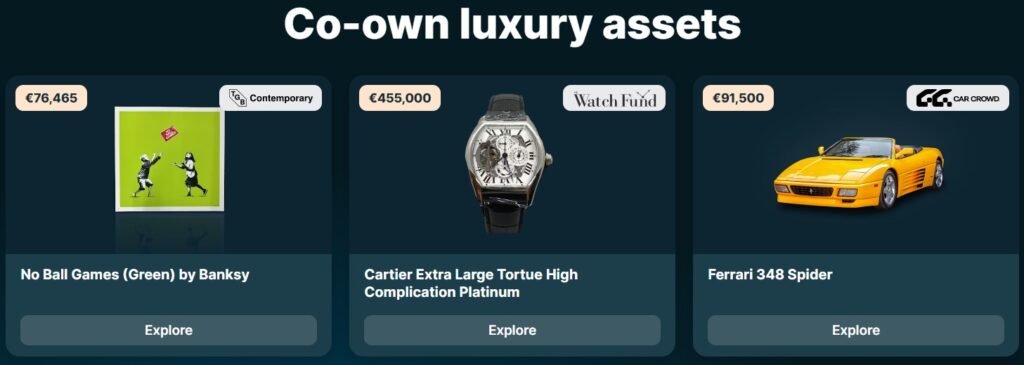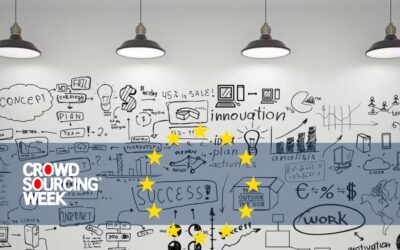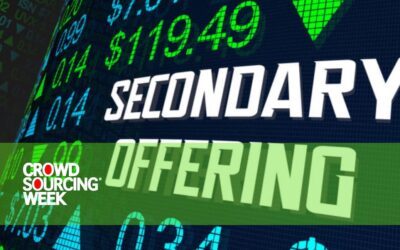Crowdfunding has become a popular way for artists to raise funds for their creative projects, bypassing traditional galleries and patrons. A more recent development has been the opportunities for everyday retail investors to include part-ownership, also referred to as fractional ownership, of expensive works of art in their investment portfolio. The digital age has ushered in a revolution, and owning a masterpiece is no longer a privilege reserved for the ultra-wealthy, with their collections hidden behind the velvet ropes of private galleries. Fractional ownership of art is a crowdfunding technique that allows retail investors to own a piece of even a Picasso painting.
Crowdfunding develops new artists
Crowdfunding platforms have become a game-changer for current day artists. Imagine a struggling sculptor with a vision for a monumental installation. Gone are the days of pleading with hesitant galleries or relying on the whims of a single patron. Now, through platforms like Kickstarter or Patreon, artists can directly connect with a global audience of art enthusiasts. By creating compelling campaigns showcasing their work and outlining their project, they can raise funds from a multitude of backers who believe in their vision. This not only empowers artists financially but also fosters a sense of community around their work. Backers, transformed from passive observers to active participants, feel a deeper connection to the art they’re helping create.
Crowdfunding enables fractional ownership of art
Democratization within the art world doesn’t stop there. A recent and exciting development is the rise of fractional ownership through crowdfunding. This innovative approach takes a page from the stock market playbook, allowing a single, expensive artwork to be divided into tradable shares.
Platforms like Masterworks act as curators, meticulously selecting high-value pieces with strong investment potential. The ownership of these masterpieces is then “securitized,” meaning it’s fragmented into shares or tokens. This allows a multitude of investors, even those with modest means, to own a fraction of a Monet or a sliver of a Van Gogh.
A Deloitte report released in December 2023 estimates the current regulated fractional ownership market for art and collectibles is over US$1 billion, and that several of the more established fractional ownership platforms have seen their assets doubling annually since 2020.
Some platforms allow a multitude of investors to buy shares in a piece of art, which the platform sells at what it considers to be a very good time and price, securing a return for each investor. Others allow the investors to trade their shares at their own discretion, sometimes on secondary markets, to suit their personal financial and investment requirements and goals.
The benefits of fractional art ownership
First, it dismantles the financial barrier that previously limited art investment to the privileged few. Now, anyone with a disposable income can participate in this unique asset class.
Second, it provides diversification for investment portfolios. Unlike stocks and bonds, which can be susceptible to market fluctuations, art has historically shown a positive long-term trend in value. Owning a fraction of a masterpiece adds a layer of diversification, potentially hedging against economic downturns.
Finally, fractional ownership offers the potential for significant returns. When the artwork eventually sells, investors share proportionately in the profits, potentially reaping handsome rewards from market appreciation.
Examples of Fractional Art Platforms
Masterworks

Examples of returns on artwork investments made at Masterworks. Source: Masterworks
When US-based Masterworks purchases a painting, it registers the asset with the Securities and Exchange Commission and then offers shares in the work to investors in the style of an IPO (initial public offering). Masterworks says it usually offers investors a new painting every four to five days.
It adds an approximately 11% fee on top of the original purchase price when it lists the work on its website and charges a 1.5% annual management fee. When an artwork is sold, the company takes 20% of any profits, and the rest is distributed among the shareholders.
Investors who want to exit before the sale of the underlying work can sell their shares on Masterworks’ secondary market. The minimum investment is $20.
Artemundi
Artemundi enables European investors to crowdfund art through the purchase and ownership of fractions of artworks, referred to as “splints,” starting from €50. A high point was the sale of a Picasso painting, the 1964 work ‘Fillette au Beret’, in tokenized form in 2021. Sygnum, a digital asset bank based in Switzerland, and Artemundi teamed up to create Art Security Tokens (ASTs) for the painting.
Yieldstreet
Yieldstreet’s Art Equity Funds offer clients the opportunity to invest in collections of works by a range of artists with significant potential for appreciation. Each fund has its own theme—one, for example, focuses on African American artists working from the Harlem Renaissance to the present day.
Distributions are made to investors as the artworks are sold during the life of each fund, which is set at five years with the possibility to extend for an additional one to two years. With a minimum investment of $10,000, perhaps Yieldstreet isn’t as ‘democratic’ as other platforms.
Konvi
Konvi is an app that lets everyday investors and collectors co-own luxury assets such as watches, cars, art, wine and whisky alongside world class experts. Users are able to diversify their portfolios by investing in rare assets that have a track record of appreciating by 8-20% per year. Minimum investment levels begin at €250.
Konvi transfers the partial ownership of luxury assets directly to purchasers who hold that ownership in trust through a third party company. This means the assets are not linked to the liability of Konvi or its partner funds, meaning that in the unlikely event that Konvi goes bankrupt the partial ownership of the physical assets will be completely protected. Konvi is regulated by the Central Bank of Ireland.

Source: Konvi
Sotheby’s
Even traditional auction houses are embracing the concept and the technology. In June 2021, Sotheby’s auction house, now a British-founded multinational corporation with headquarters in New York City, used NFTs to digitally secure the Picasso painting ‘Le peintre et son modèle.’ The auction house placed Picasso’s real physical painting, together with specially crafted NFTs, on the Ethereum blockchain.
In 2022, Picasso’s granddaughter, Marina Picasso, and her son Florian Picasso, again used Sotheby’s fine art auction website to sell 1010 NFTs representing part of a ceramic art piece created in 1958 and which had never been displayed.
Challenges of fractional art ownership
Crowdfunding art through fractional ownership is still in its nascent stages. Regulations and best practices are still evolving, and the long-term viability of the model remains to be seen. Platforms themselves are relatively new, and their track records for selecting artworks whose values appreciate are yet to be fully established.
Another key consideration is liquidity. While some platforms boast secondary markets where investors can trade their shares, these markets may be limited in size and activity. Unlike publicly traded stocks, there’s no guarantee of readily finding a buyer for your fraction of a Rembrandt or a Warhol.
Art values remain subject to other external factors in the wider economy. Violent conflicts in Israel, Gaza, and elsewhere around the world, appear to have prompted a move by investors to artwork by historical and established creators rather than work by modern artists: “…blue-chip art seems to be the strongest in the face of economic turmoil,” says a Deloitte report.
Furthermore, art, unlike a company share, doesn’t generate dividends. Its value is based on subjective factors like market demand and artistic merit. Unlike a stock with a clear underlying value, there’s no guarantee that your investment in a fraction of a Warhol will appreciate. Investors must be prepared for the possibility that the artwork’s value might not rise as expected, or worse, even depreciate.
While fractional ownership through crowdfunding opens doors for art investment, careful due diligence and a strong understanding of the risks involved are crucial before diving in. Do your research, and investigate any platform’s reputation, fees, and track record. Understand the risks, that art is a volatile asset class, and there’s no guarantee of returns. Fractional art ownership is likely a long-term investment strategy.
Key Takeaways
Despite these challenges, the potential of fractional ownership through crowdfunding art is undeniable. It democratizes access to a previously inaccessible asset class, fostering a new generation of art patrons and investors.
For artists, it opens doors to a wider audience and a more sustainable career path.
As the technology matures and regulations solidify, fractional ownership has the potential to redefine the art world, transforming it from an exclusive club to a vibrant and inclusive marketplace where anyone can own a piece of history and beauty.





0 Comments